Logistics

Nigeria targets maritime economy with seaport projects
Nigeria has approved seaport development projects in three states of the country’s southern region as part of push to expand port infrastructure and services that will boost revenue in Africa’s biggest economy. The Federal Executive Council’s approval will allow the development of the Ondo Multi-purpose Port in Ilaje, Ondo State; the expansion of Snake Island Terminal in Lagos State; and the expansion and development of Burutu Seaport in Delta State; all through public-private partnerships (PPP). By 2030, Africa’s Blue Economy, a key priority area of the African Union’s Agenda 2063, is estimated to grow to $405 billion, generating 57 million jobs, according to the African Union. For Nigeria, the development of seaports projects could strengthen its position as a major hub and gateway within Africa’s growing maritime economy. As the Nigeria Ports Authority confirmed the approval of seaport projects in the states of Ondo, Lagos and Delta, the Authority provided insights into what it means for Nigeria and development partners. Ondo Deep Sea Project The Ondo State Government, along with its partners, incorporated the Special Purpose Vehicle (SPV) Port of Ondo Development Limited to design, finance, operate, maintain, and transfer the Ondo Multi-Purpose Deep Sea Port at a total project cost of $1.48 billion. It’ll be fully funded by the proponent for a concession period of 50 years. Projected revenues accruing to the Federal Government are expected run into $50 billion in royalties and other fees in marine services, while the proponent is expected to receive USD $2.6 billion in profits throughout the concession tenor. The Ondo Deep Sea Project will be developed in two phases. Snake Island Port According to the Nigeria Ports Authority, this project would expand the existing port facility from the current single berth to 4 terminals with 3 km of quay, 7 ship berths, and 11 barge berths, with 6 to 13.5 meters of the draft on a total area of 90 hectares. It would comprise container, bulk, and multipurpose (general cargo/RoRo) terminals. The Snake Island Port facility, located within the Snake Island Integrated Free Zone (SIIFZ), would be expanded at a total cost of $974.1 million for a concession period of 45 years. Projected revenues accruing to the Federal Government stand at $18 billion in royalties and marine services, while the proponent is expected to receive $5.23 billion in profits throughout the concession tenor. Burutu Port Project The Burutu Port project in Delta State, proposed by Messrs. Akewa Colmar Services Ltd., has been conceptualized as a mining, inland transportation, logistics base, operating as a transshipment hub for the provision of other port services in western and central Africa. As part of the project, the old port at Burutu will undergo rehabilitation while a greenfield port, proposed for Agge in Delta State, would be developed. The project is estimated to cost $1.2 billion for a concession period of 40 years. Projected revenues accruing to the Federal Government stand at $125 billion in royalties and marine services, while the proponent is expected to earn $9 billion in profits throughout the concession tenor. The project will be developed in three phases. Revamping ports infrastructure for growth and development “These projects are the results of the Federal Government’s drive, through the Federal Ministry of Transportation (FMT) and the Nigerian Ports Authority (NPA), to improve port services, increase revenues, and take pressure off the existing ports and critical infrastructure,” the NPA said in a statement, adding the Infrastructure Concession Regulatory Commission (ICRC) have issued Certificates of Compliance to the port projects. Many of Nigeria’s existing seaports, inherited from the colonial administration, have struggled to function efficiently over the years. But the country is ramping up investments to reverse the trend. At the beginning of this year, Nigeria commissioned the Lekki Deep Seaport, next to the Dangote Refinery, on the east of Lagos. The port, which is the largest in Nigeria, is expected to end cargo congestion in Lagos and cut waiting times offshore.
Read more »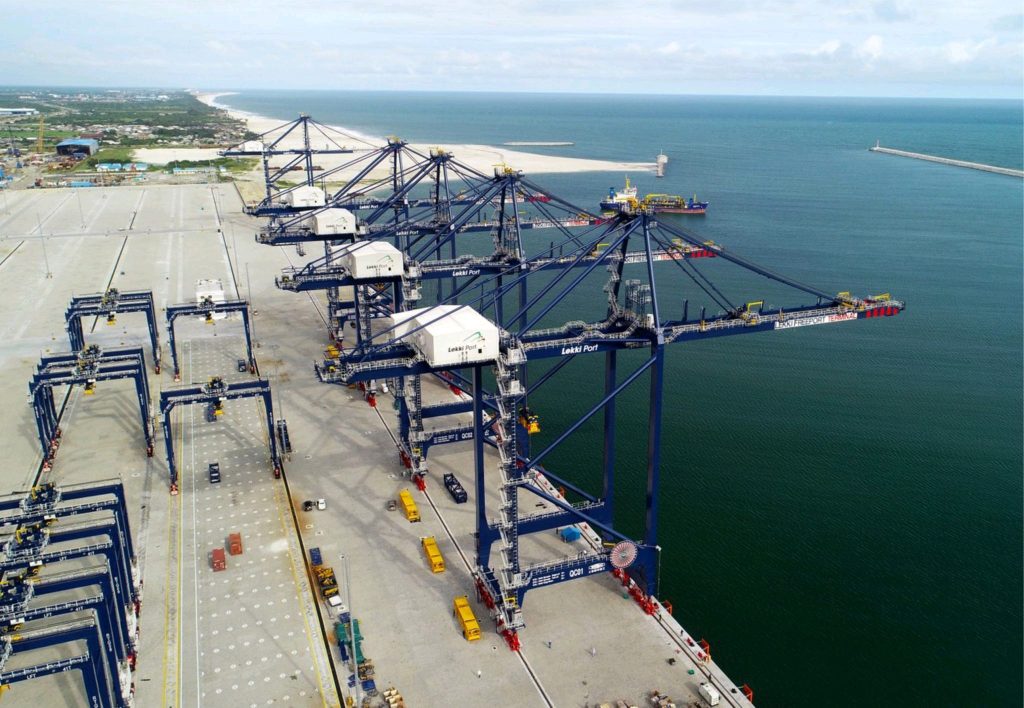
Nigeria’s new Lekki port has doubled cargo capacity, but must not repeat previous failures
Three-quarters of the world is covered by water and up to 90% of world trade is seaborne. Seaports and shipping are critical to the conduct of global trade. Africa has relatively few natural harbours that offer shelter and are deep enough to take big vessels. Along the Atlantic coastline of West Africa, for instance, natural harbours exist only at Freetown and Lagos. Consequently, artificial ports have been carved out of lagoon and river ports, which dot the coastline from Morocco to South Africa. Considerable capital and engineering know-how have been applied since the late nineteenth century to make African ports accessible to ocean shipping. Since the 1990s, African countries have engaged in a “ports race” to emerge as the shipping hub for their region. In this context, the recent completion of the US$1.5 billion Lekki Deep Sea Port in Lagos, Nigeria, is significant. Lekki is one of Africa’s top six ports. It is Nigeria’s first fully automated port, and its largest. It has more than doubled the capacity of Lagos’ ports, which had remained the same for 25 years. It will accommodate the world’s largest cargo ships and is expected to reduce cargo wait times from over 50 days to two days. Its modernity and efficiency are projected to make Nigeria a regional hub and boost the country’s GDP. It is envisaged to generate 170,000 direct and indirect jobs, billions of dollars in tax revenues for Lagos State and the host community, and a turnover of US$361 billion over the next 45 years. My work on the economic history of African seaports supports the view that the Lekki Deep Sea Port could serve as a pivot of local and regional development. The project should have multiplier effects on commerce, industry, agriculture and small-scale enterprises connected to it by various modes of transport. A combination of factors will determine its success. These include its capacity to meet the demands of shipping; its efficiency and competitiveness in the national and international contexts; the coordination of policies; the way transport modes work together; the state of the inland economies; and the application of technology. Nigeria’s port history In colonial Nigeria, significant port development took place between 1850 and 1950 for the economic benefit of Britain. Shipping was concentrated at a few ports during the world wars and the Great Depression (1929-33). But increasing imports and exports in prosperous times required more functioning ports to cope with the greater volume of trade. Lagos and Port Harcourt gained prominence because they had railway links to the hinterland. Port Harcourt was created as an outlet for the coal exports from Udi, near Enugu in eastern Nigeria, and the tin exports of the Jos Plateau. Lagos had become the leading port in West Africa following extensive harbour works between 1892 and 1914 when it welcomed its first ocean liner. It handled the bulk of Nigeria’s foreign trade right into the independence period. The civil war of 1967-70 compelled the adoption of a policy of port concentration at Lagos. Port congestion at Lagos was aggravated by the demands of post-war reconstruction. Massive oil revenues, following the 1973 Arab-Israeli conflict, funded massive imports. Poor planning saddled Nigerian ports with an armada of cement-laden ships in the late 1970s. The congestion imposed huge demurrage costs on the country. And containerisation, which existing seaports were unsuited to handle, made it necessary to expand Apapa Port and create the Tin Can port in Lagos in 1977. During the 1980s and 1990s, the growth of the national economy outstripped the installed capacity of Nigerian ports. At the same time, Nigerian ports attained increasing notoriety for inefficiency, decaying infrastructure, uncompetitive tariffs and systemic corruption. Other West African ports offered better services – so traffic went there instead. The Nigerian government eventually in 2005 adopted the landlord model of port administration: state control was replaced by a system of concessions. This improved port services, but did not bridge the gap between capacity and volume of container traffic. Thus the idea of the Lekki Deep Sea Port was conceived. Lekki port’s potential Lekki is expected to generate direct and induced business revenue estimated at US$158 billion, a qualitative impact on the manufacturing, commercial and services sectors, and a multiplier effect over 230 times the cost of construction. It will attract a massive influx of people, businesses and investment. The new facility will support the industrial and petrochemical complex, including the Dangote Refinery, the largest in the world, situated in the Lekki Free Trade Zone. It is poised to attract investment in the range of US$20 billion in the first few years. With an airport in the vicinity, the port will be a component of a Harbour City equipped with logistics infrastructure of various kinds. Lekki port should reduce congestion at the older ports in Lagos and help recover the lost traffic of landlocked Chad and Niger, which had been diverted to more efficient ports in the sub-region. The port also positions Nigeria to optimise the African Continental Free Trade Agreement. Weak Points However, it appears that the project suffered from some lapses in planning. Provision for cargo evacuation by rail is non-existent, and the road infrastructure is inadequate for the anticipated volume of traffic. The other challenge is the encroachment on land around the Lekki port and the future problem of congestion. Unless the state government takes drastic action under the Land Use Act to acquire land in the public interest for the future expansion of the port, it will be a repeat of the problems of older ports hemmed in by unplanned industrial, urban and commercial land use. The project indicates that public-private sector partnership is the best way to plan and deliver landmark infrastructure projects. Lekki Port LFTZ Enterprise Ltd was created for the purpose, with investment by China Harbour Engineering Company Ltd, Singapore’s Tolaram Group and the Nigerian government. But it has the potential drawback of idle capacity if the economic prospects that motivated it fail to materialise. Then the huge investment in the deep sea port project would become a huge burden of unpaid debts. This article is republished from The Conversation under a Creative Commons license. Read the original article.
Read more »
Angolan Government awards concession tender for critical Lobito Corridor railway
The Angolan Transport Ministry has awarded the 30-year concession for rail services and logistics support over the Lobito Corridor to the consortium of Trafigura (49.5%), Mota-Engil (49.5%), and Vecturis (1%). The Lobito Corridor is a key route that connects mines in the D.R. Congo to the Lobito Port in central Angola, from where commodities can be exported to global markets. Until now, exporting Congo’s copper, cobalt and metals required several weeks by connecting to Dar es Salaam in Tanzania, Beira in Mozambique, or as far as Durban in South Africa. The concession follows a competitive tender and can be extended by another 20 years after its initial period. “With increased dynamics in the transportation of minerals and other materials in the coming years and improved competitiveness of the rail system, it is expected that the Lobito Corridor could become the 3rd most important corridor in the SADC region by 2050,” Trafigura said in response to the award. The private consortium will operate, manage, and maintain the rail infrastructure that links the Port of Lobito to Luau in eastern Angola, next to the DRC border. Key commodities include minerals, liquids, gas, and cargo transport. A significant investment is notably expected into improving the infrastructure and rolling stock for freight operations to increase capacity.
Read more »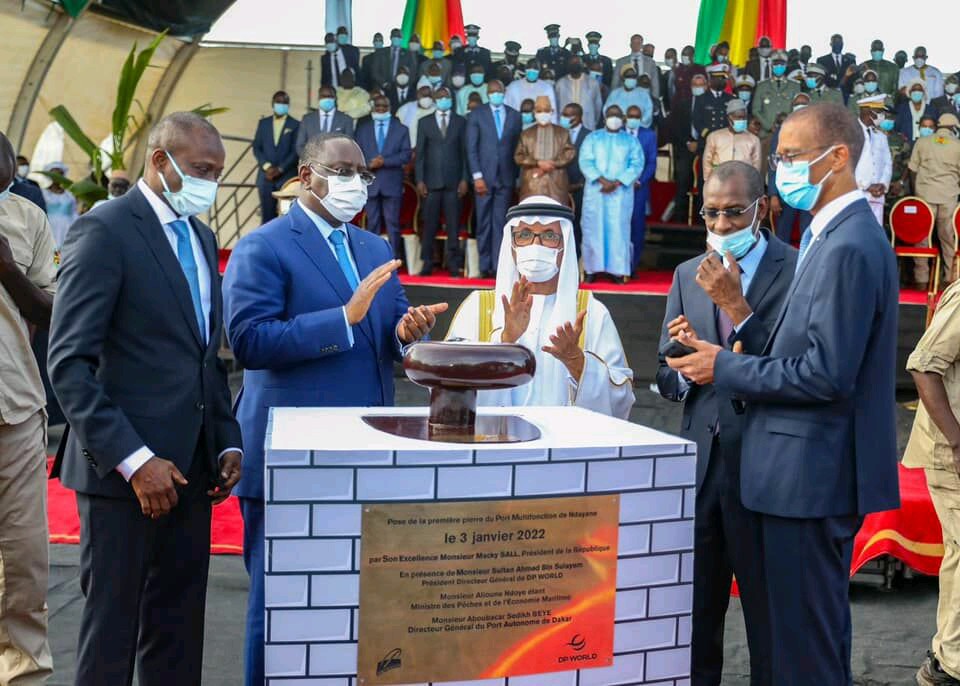
DP World breaks ground at $1.1bn Ndayane deep-water port in Senegal
On Monday this week, Senegalese President Macky Sall laid the foundation stone for the new $1.13bn Ndayane deep-water port, 50km south of Dakar. The project is led by a joint-venture of DP World of Dubai and the Dakar Port Authority and represents so far the biggest private investment in Senegal. According to DP World, the first phase will include 840 metres of quay and a 5 km marine channel designed to handle 366-metre vessels, with a second phase adding 410 metres of container quay and further dredging to handle 400-metre vessels. The Dubai-based logistics giant will notably develop and operate the 300-hectare container terminal, as well as finance and design the land and maritime infrastructure for the port. In October last year, the UK’s development finance institution and impact investor CDC Group (CDC) announced a partnership with DP World to invest into Africa’s trade and logistics infrastructure. Under this long-term partnership, DP World had notably committed to invest a further $1bn into existing ports in Dakar (Senegal), Sokhna (Egypt) and Berbera (Somaliland).
Read more »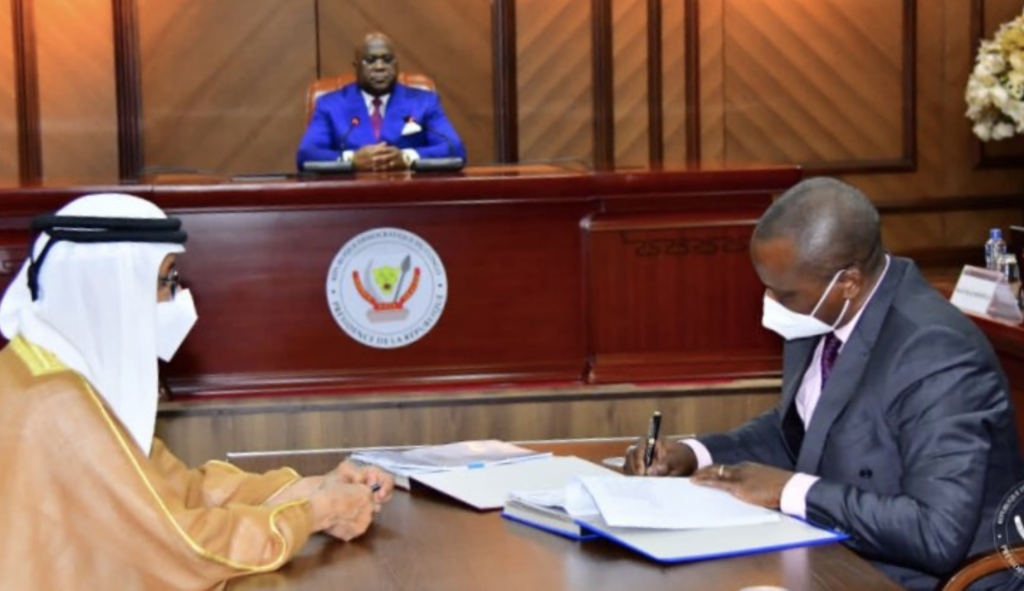
DP World and the Democratic Republic of the Congo sign final agreement to develop Banana Port
On Monday this week, DP World and the Government of the Democratic Republic of the Congo (DRC) have signed the Collaboration Agreement for the development of the Banana deep-sea port. The agreement was signed in the presence of President Tshisekedi and follows the sgning of a term sheet earlier this year with DP World. The project has been in the making since 2018 when the initial contract was signed. The Collaboration Agreement signed this week paves the way for a groundbreaking on the project within a year. “DP World will develop an initial 600-meter quay with an 18m draft, capable of handling the largest vessels in operation. It will have a container handling capacity of about 450 000 TEUs (20-foot equivalent units) per year, and a 30-hectare yard to store containers,” DP World said.
Read more »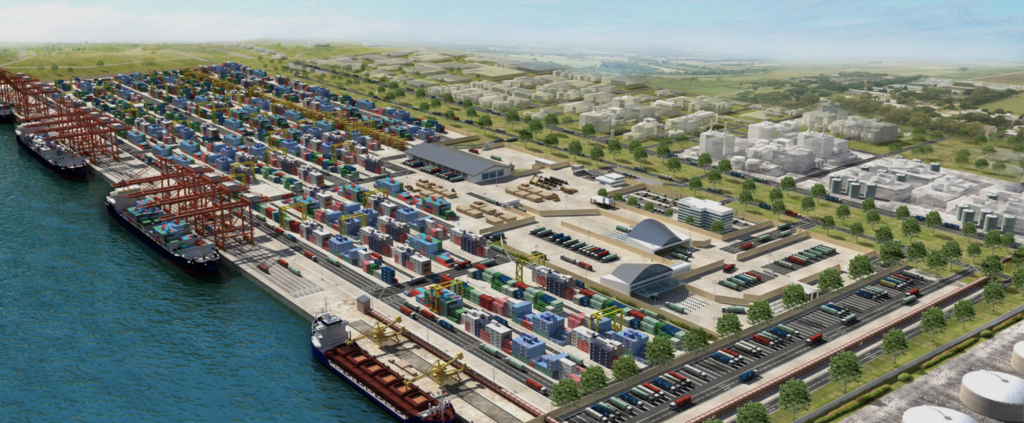
The Lekki Deep Sea Port is over 70% complete
The Lekki Deep Sea Port was over 70% as of late October this year, its promoters have revealed. The project’s construction and development is being undertaken by Lekki Port LFTZ Enterprise Limited (LPLEL), a special purpose vehicle promoted by the Tolaram Group and China Harbour Engineering Company Ltd (CHEC). CHEC injected US$221 million into LPLEL in March 2020 and became the company’s controlling shareholder with 52.5%. The remain shareholders are the Tolaram Group (22.5%), the Lagos State Government (20%) and the Nigerian Ports Authority (5%). LPLEL was awarded the concession for 45 years by the Nigerian Ports Authority (NPA) on a Build, Own, Operate and Transfer (BOOT) basis. Under the agreement, the company is required to develop, finance, build, operate and, at the end of the concession term, transfer the port to the NPA. All major infrastructure components are over 50% complete including land side infrastructure (55.38%), the quay wall (74.13%), the breakwater (74.13%) and the dredging and reclamation works (82.19%). Upon completion, Lekki Port will have a total of 3 container berths, 1 dry bulk berth and 3 liquid berths.
Read more »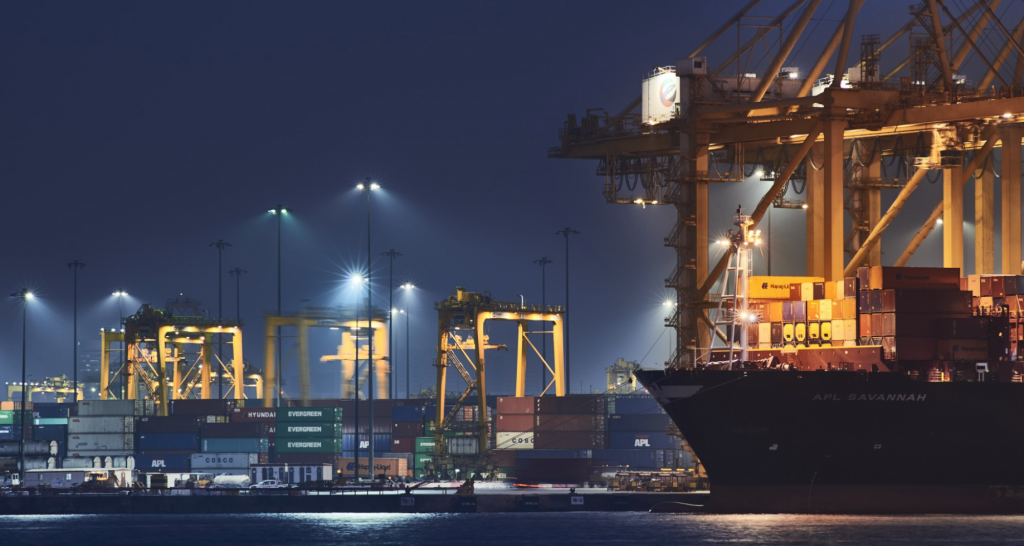
CDC partners DP World for $1.7bn Africa logistics investment platform
The UK’s development finance institution and impact investor CDC Group (CDC) is partnering with DP World of the UAE to invest into Africa’s trade and logistics infrastructure. The long-term partnership will see DP World investing a further $1bn into existing ports in Dakar (Senegal), Sokhna (Egypt) and Berbera (Somaliland). On its side, CDC is initially committing approximately $320 million and expects to invest a further $400 million over the next several years. The additional investment into Berbera aims to turn the port into a regional trading hub boosting economic growth in Somaliland and supporting the growth of Ethiopia by offering an alternative export and import route for the country. In West Africa, the expansion of the Dakar port will be adding capacity as other ports are increasingly being stretched and unable to serve the hinterland. “The port expansion will support trade with landlocked Mali and help Senegal become a hub of economic activity for the region,” CDC explained. The partnership is expected to create 138,000 jobs by investing in origin and destination ports, inland container depots, economic zones and broader logistics infrastructure.
Read more »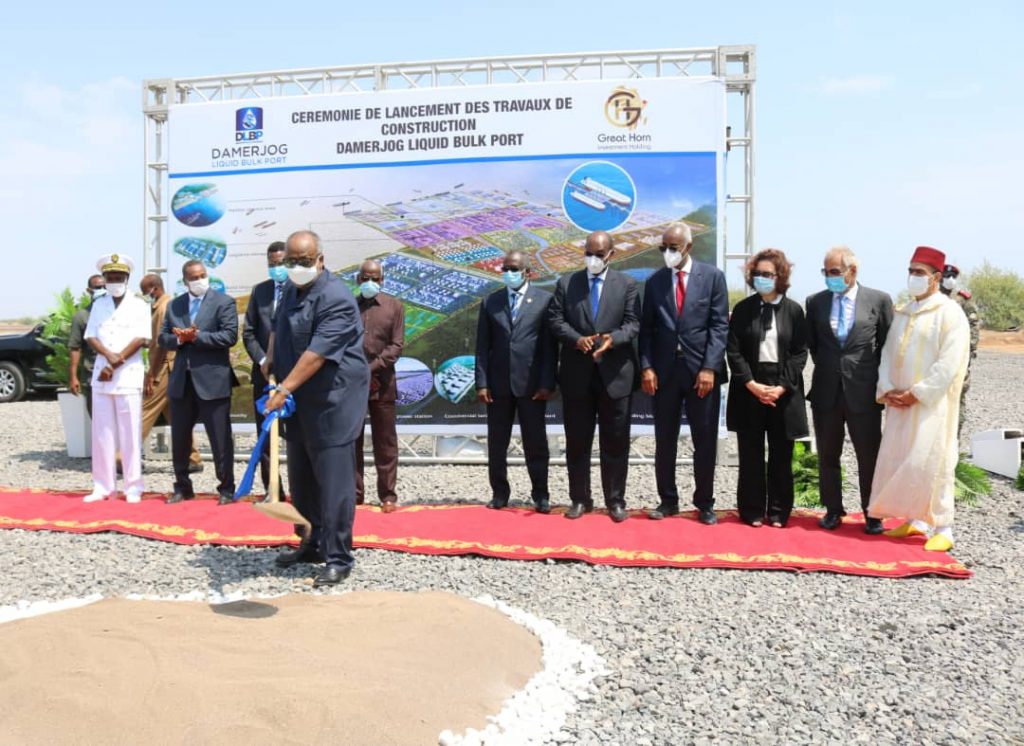
Despite Lack of Natural Resources, Djibouti Attracts Major Investments in Infrastructure
Djibouti has no natural resources, a land area of only 23,200 km2 and a population of 1m. Yet, the country has attracted billions of dollars of investments over the past decade, making some of Africa’s biggest economies look up to it with envy. Foreign investors from China, the Middle East and the United States are injecting billions into the country’s ports, oil & gas terminals, free trade zones and a 750km rail line that serves Ethiopia’s population of over 110m. That railway line alone can carry 2,600 tonnes of wheat and fertilisers and 110 containers per trip. At a time when African countries continue to decry the lack of investment into the continent’s infrastructure, Djibouti is forging ahead and using its geographical location to build the trade and services infrastructure of tomorrow. Geography is the country’s biggest asset: Djibouti is located on the strait of Bab-el-Mandeb on the north-east edge of Africa, where 30% of the world’s shipping passes on its way to the Suez Canal. Coupled with political and economic stability, Djibouti offers investors a safe haven to tap into the world’s most dynamic globalization routes while serving Africa’s growing population. It also helps that its neighbours Eritrea and Somalia continue to be plagued with insecurity and instability. Djibouti’s ports and container terminals remain amongst the most productive in the world. According to a new global container port performance index compiled by the World Bank and IHS Markit, its port is even the most efficient in Africa measured by minutes per container move. With such efficiency, Djibouti’s goal of emulating Singapore as a leading maritime trading hub is within reach. To cement its position as the world’s future big trading hub, Djibouti recently set up a sovereign wealth fund with a view to finance about $1.5bn of domestic business activity over the next decade. In parallel, the country has embarked on significant infrastructure expansion with the Djibouti Damerjog Industrial Development Free Zone, echoing Singapore’s own Jurong petroleum and petrochemicals hub. The industrial park represents a 15-year undertaking and is expected to house integrated energy and petrochemicals facilities and further position the country as a strategic energy and industrial hub meeting the needs of the East African sub-region. While the complex was initially conceptualised to export South Sudanese oil, it eventually developed into a mega industrial and petrochemicals scheme. The ultimate oil complex will cover 80ha, starting with the development of 32ha comprising of 300 000 m3 storage tanks, an oil jetty and railway infrastructure connected to the Nagad Station, and from there to the Djibouti-Addis Abebe railway line. It will also include the construction of a 6 million tonnes refinery by the China Marine Bunker Co. Ltd (CHIMBUSCO) that will refine Saudi and Sudanese crude into marine fuels with a sulphur content of no more than 0.50%S, along with diesel, naphtha and LPG. The facility would primarily meet demand for Djibouti and Ethiopia and be followed by the construction of an onshore refinery. The industrial park will also benefit from a 150MW gas-to-power plant, starting with a 20MW hybrid power station expected to be commissioned in 2022. Such power supply will be key for all upcoming manufacturing units in the park built by Chinese investors and including steel, metal mesh, PVC pipes and glass. The anchor project for the whole complex is the Damerjog Liquid Bulk Port, Djibouti’s seventh port, built by Moroccon contractor SOMAGEC. President of Djibouti Ismaïl Omar Guelleh laid the foundation stone there in September 2020. Details on the Damerjog industrial park and liquid bulk terminal can be found in the “Projects” section within your Hawilti+ research terminal.
Read more »